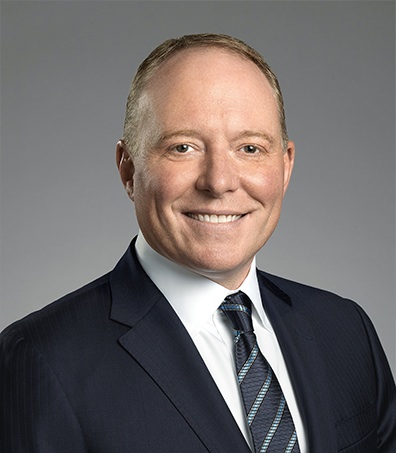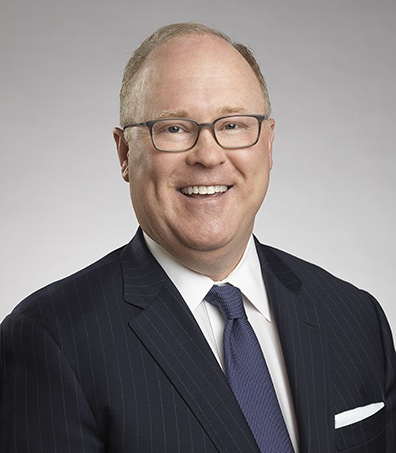Survey says: It’s mainstream.
About 62 percent of U.S. lawyers have firsthand experience with the comparatively youthful litigation finance system, and 80 percent of those who haven’t worked with it yet would consider doing so, a 2022 industry analysis showed.
Those statistics weren’t achieved overnight. Since the industry’s advent in the U.S. a decade ago, litigation funders have been working hard both to expand awareness of the innovation financing option and gain acceptance.
As one of the country’s first and largest practitioners, Longford Capital has been in the mix from the beginning. Co-founders Tim Farrell and Mike Nicolas recently discussed with Lawdragon the industry’s evolution to not only meet marketplace demand, but also to drive strategic thinking and efficiency across the legal system.
Lawdragon: The two of you have had an insider’s view on a decade of very impressive growth. Can you share some of your unique perspective with us?
Tim Farrell: When we first entered this asset class in 2011, our focus was on single case investments, where we would fund a single commercial case against one or more defendants. The asset class was in its infancy. There were only a few players in the U.S., and the amount of available capital was much smaller than today.

Since that time, the asset class has matured significantly. You can see it in the increased number of funders, the amount of available capital, and the innovation in product offerings. A greater share of our investors are endowments, pension funds and other sophisticated institutions. And most recently we’ve seen the development of a secondary market. Funds are emerging that are entirely devoted to secondary investments. These are all signs of a maturing asset class.
Mike Nicolas: The evolution and expansion of the asset class has really accelerated over the past five years. New product offerings have come on the scene, including law firm portfolio investments, where we partner with a law firm to fund a basket of matters for different clients; client-side portfolios, where we work directly with corporate claim owners on multiple lawsuits; and corporate monetizations, where we enable companies to monetize a portion of their contingent interest in future proceeds from a lawsuit. These types of monetizations became popular during the pandemic, when companies were facing unprecedented pressures to generate new sources of revenue to weather difficult and uncertain business conditions.
TF: We have also found that being nimble and collaborative in the way we structure transactions has been a competitive advantage in an increasingly competitive marketplace. Because of the sophistication of our finance team, we are very comfortable providing creative financing structures that meet the ever-changing needs of our clients and their law firms.
MN: In addition, over the past two years, we have seen a significant increase in interest from large insurers in participating in our asset class. As just one example, we have worked with some of the leading insurance carriers in the world to craft judgment preservation policies that protect positive trial judgments from the risk of reversal on appeal. Very recently, several large insurance carriers have begun to offer portfolio insurance wrappers, where the carriers will insure some or all of a litigation funder’s portfolio of investments, including a portion of the potential profits on those investments. This is a leap forward for our asset class, and another indication that litigation finance is here to stay.

TF: And while all of this has happened, we’re still an emerging market. Demand for litigation funding far outweighs the supply. While there have been new entrants into the market, there are still high barriers to entry. Longford and a handful of other funders enjoy certain advantages because of our experience, size and reputation. These things matter. The most sophisticated players get the greatest deal flow, which supports our ability to drive change and innovation.
LD: What changes in litigation finance were unexpected?
MN: No one expected a global pandemic. With courts shutting down or significantly limiting their trial calendars, we faced delays in the pace of our investments that we had never previously encountered. With things finally returning to normal, we have seen a renewed interest on the part of the judiciary to move cases forward as efficiently as possible to trial. That said, only so much can be done to accomplish this objective. Criminal cases always come first, as they must under our constitutional system. The civil dockets of most jurisdictions remain significantly backlogged, with the earliest available trial dates being 18 or more months away. While we have seen some efficiencies emerge from the pandemic, most notably the ever-increasing use of remote court hearings and depositions, the court system remains relatively slow-moving, which is a reality that was only exacerbated by the pandemic.
The tried and true “outspend and outlast” strategy that corporate defendants often deploy against smaller, less-established companies is not as likely to work.
On the positive side, we saw a significant increase in the demand for our capital during the pandemic, undoubtably driven by companies’ desire to manage their legal expenses during an uncertain and volatile time, or to prevent Covid-19 from forcing them to abandon their legal rights or accept an otherwise unacceptably low settlement offer. Corporate portfolios, monetizations and other financing options helped companies manage their business at a critical time, and we are proud to have been able to provide these solutions to our clients.
LD: Do you believe that litigation finance can drive systemic change, and make the legal system more efficient?
TF: I do. We’ve always believed that our capital provides access to justice, leveling the playing field for companies that may lack the resources to bring a meritorious legal claim. And we’ve seen that happen repeatedly over the last 10 years. More recently, we’re starting to get feedback from defense counsel and in some cases the defendants themselves. When they learn that we’re backing a company, it impacts their decision making. They know that the case has been carefully vetted and is well-financed.
MN: I agree. When defense counsel becomes aware that we are involved in a case, it can have a material impact on defense strategy. The tried and true “outspend and outlast” strategy that corporate defendants often deploy against smaller, less-established companies is not as likely to work. There is a growing acknowledgement among defense counsel that when a rational, sophisticated third-party funder has conducted a rigorous due diligence examination of a company’s case and is willing to put capital at risk on a non-recourse basis, the case must be taken seriously.
LD: What impact do you aspire to have going forward?
MN: Our vision starting out was that we could help make the legal system more equitable. We provide access to justice, helping to ensure that the merits of cases drive outcomes rather than the depth of the parties’ pockets. After 10 years, we see evidence that this is happening, and Longford has played a vital role in making it happen. The widespread awareness of litigation finance, the evolution of investment types and deal structures, and the increasing sophistication of investors we believe have all contributed to the gains we’ve seen, and we have no doubt this will continue, especially as the disclosure of litigation funding becomes more prevalent.
TF: Some courts that have considered the role of funders have decided that it is fair to disclose when a funder is involved in a case but that the funder’s agreement with their client is off limits for discovery on the basis that it is irrelevant to the underlying dispute. We believe this trend will continue and that as more defendants and their legal counsel understand the types of cases we support, they will conclude that there’s a more efficient way to resolve disputes than costly and protracted legal battles. Longford and other first-rate funders work very hard to invest only in what they believe to be the most meritorious cases. Defendants and defense counsel are taking note, thinking strategically about our involvement and taking steps to resolve disputes more efficiently.


